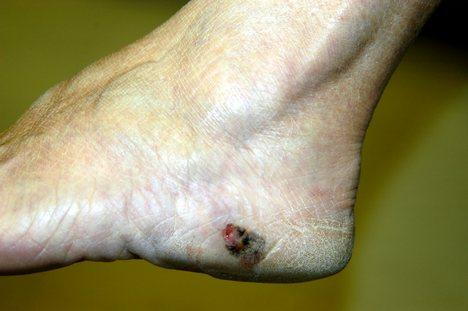 Malignant melanoma is the leading cause of death from all diseases arising from the skin, and can easily go unnoticed. It is a mere 4% of all skin cancers, yet is responsible for around 79% of all skin cancer deaths. Survival rates among all races are around 90% at 5 years. In the U.S. there were around 76,250 new cases of melanoma and around 9,800 deaths in 2012. Overall lifetime risk for malignant melanoma is 1 in 50 for whites, 1 in 200 for Hispanics and 1 in 1,000 for blacks. These statistics may seem ominous, but by learning more you can take important steps to avoid malignant melanoma.
Malignant melanoma is the leading cause of death from all diseases arising from the skin, and can easily go unnoticed. It is a mere 4% of all skin cancers, yet is responsible for around 79% of all skin cancer deaths. Survival rates among all races are around 90% at 5 years. In the U.S. there were around 76,250 new cases of melanoma and around 9,800 deaths in 2012. Overall lifetime risk for malignant melanoma is 1 in 50 for whites, 1 in 200 for Hispanics and 1 in 1,000 for blacks. These statistics may seem ominous, but by learning more you can take important steps to avoid malignant melanoma.
First step: prevention! Recognize risk factors for malignant melanoma, which include:
- Exposure to sunlight
- Skin type (red or blonde hair, fair complexion, freckles)
- Hormonal factors
- Familial tendency (family history alone increases risk 8 to 13 fold)
- Previous history of malignant melanoma
- Trauma to existing moles
Second step: seek medical evaluation for suspicious lesions.
- Existing lesion that has recently increased in size
- Changes in color
- Pruritis (itching)
- Rapid onset of growth
- Elevation
- Bleeding
- Ulceration
How is malignant melanoma diagnosed and treated? A full thickness biopsy is taken for diagnosis, and total excision of the primary lesion remains the gold standard of treatment.
Malignant melanoma usually appears on the trunk in men, and on the lower extremity in women. It is most commonly seen between 30-60 years of age, peaking in menopausal years for women. If you notice any suspicious lesions on your foot, be sure to mention it to your podiatrist. You can never be too cautious when it comes to your health!